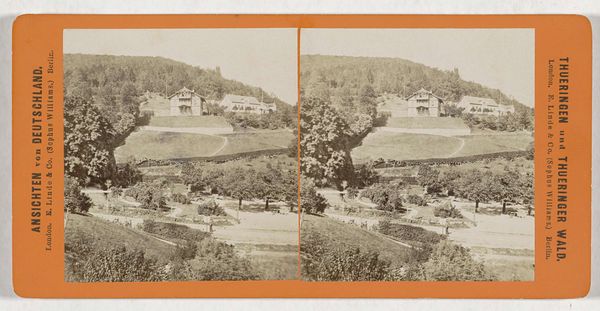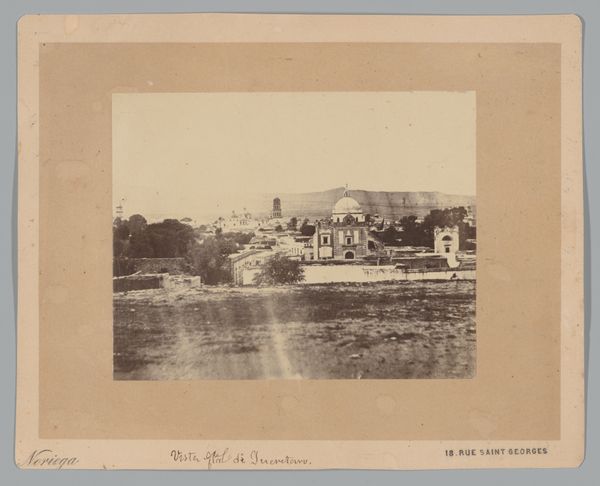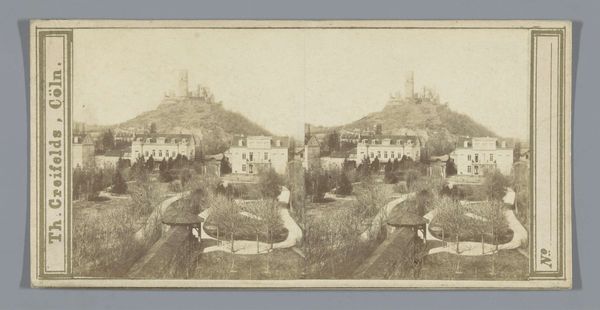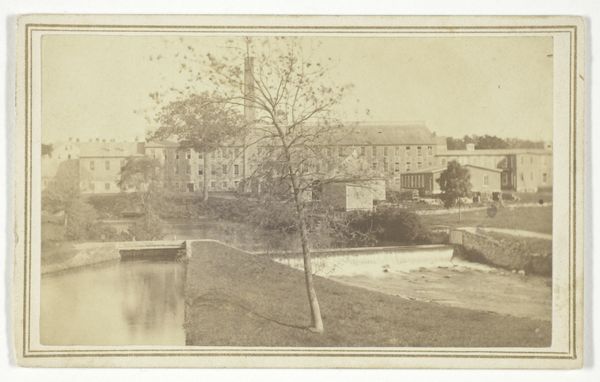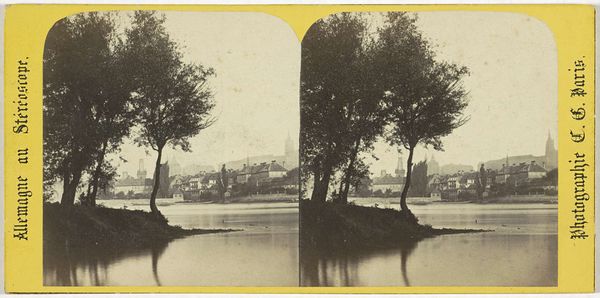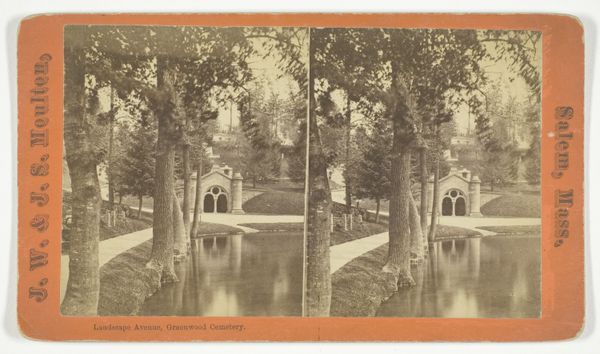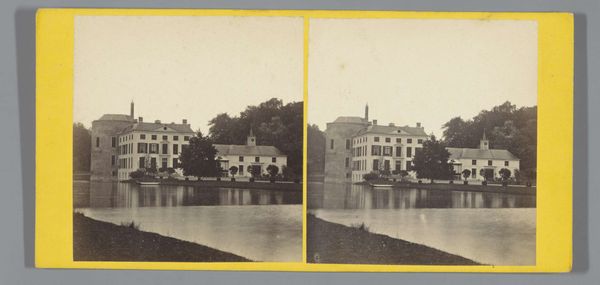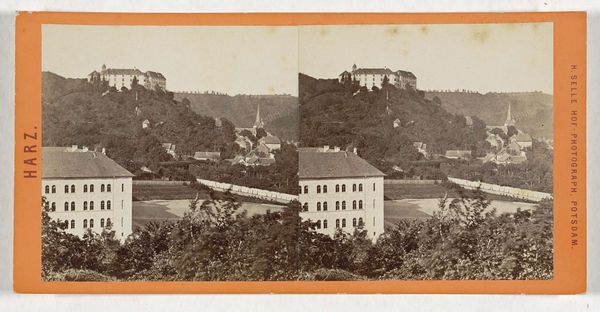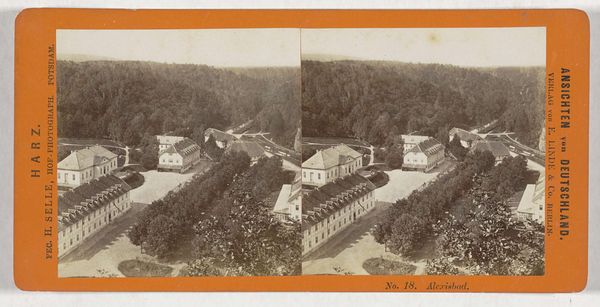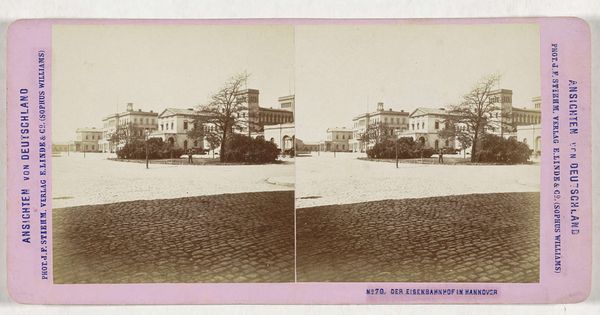
print, photography, site-specific, albumen-print
# print
#
landscape
#
photography
#
coloured pencil
#
site-specific
#
albumen-print
Dimensions: height 87 mm, width 177 mm
Copyright: Rijks Museum: Open Domain
This stereoscopic card, showing the Kuurhotel in Liebenstein, was made by Hermann Selle, and published by E. Linde & Co. It's a small object, made of card stock and photographic emulsion, made for viewing with a special device. The twin images give the illusion of three-dimensionality. The stereoscope was a popular form of entertainment in the late 19th century, and mass produced. This one provides a picturesque view of a health resort, promising relaxation and rejuvenation. The making of the object involved multiple processes, from photography to printing and assembly, and was geared for mass consumption. The stereoscopic card speaks to the commodification of leisure and the experience economy, creating an idealized image of escape from the industrialised world, while at the same time relying on the very processes of industrialisation to be made and sold. Considering materials, making, and context is critical to understanding this artwork and challenging traditional distinctions between fine art and craft.
Comments
No comments
Be the first to comment and join the conversation on the ultimate creative platform.

